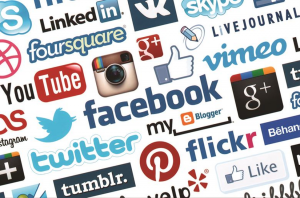How You Can Make Your Social Media More Inclusive to the Disability Community

The modern world of media is being led by the digital age. Even though the digital age has helped reduce geographical and social barriers, is the digital age completely inclusive to people with disabilities?
Technology has monumentally changed our culture in the past decade, improving the lives of people with disabilities and I wonder where technology will take us in the next ten years. Even though technology has supported people with disabilities, does social media achieve this?
Social media has paved the way for major trends. Most people have subscribed to this ever-growing network. We are constantly connected to the world right at our fingertips. But do we all have equal accessibility to this practice? My main concern is regarding the exclusion of people with disabilities on social media. In this blog, I will be discussing the topics of color contrast, closed captioning and subtitling, and alternative text.
Color Contrast
When you are designing graphics for your job or role in any capacity, inclusivity for the colorblind and visually impaired community is important for branding, the company’s image and marketing. If the text is getting lost in the coloration, you need to modify it so the text can be read.
Closed Captioning and Subtitling
For social media sites like YouTube, Instagram and TikTok, videos are leading the way as a major form of social media engagement. Videos are stimulating and they keep the audience entertained. But most videos do not have closed captioning or subtitles. Closed captioning and subtitling translate the text and display it on the screen. YouTube has included a video captioning option where you can place your own captions in the video at specific moments. If you are uploading it elsewhere, you need to use a video editing software like iMovie. Instagram and Tik Tok should offer a feature similar to YouTube where users can include closed captioning and subtitling. This gives the user more creativity with editing and encourages people to be inclusive.
Alternative Text
If someone is visually impaired or legally blind, then social media is a difficult platform to navigate, especially when Instagram and Facebook are visual heavy networks. There is a tool on phones called VoiceOver. It describes what the text says so someone that is visually impaired or blind can hear what the text says. This is where alternative text comes into play. The description of what is being posted is sufficient enough for someone to understand what the post is communicating. But they are going to have a hard time deciphering what the picture includes. Use alternative text to describe the image.
Steps to adding alternative text on Instagram
- The page where you write your post description, scroll all the way down until you reach Advanced Settings.
- Scroll all the way down until you reach Write Alt Text.
- Write your description of the picture.
- Post!
These practices not only help people with disabilities but it polishes your social media accounts, making them more dynamic and marketable to diverse audiences. #socialmediaaccessibility
Zane Landin is a fourth-year undergraduate student currently studying communications with an emphasis in public relations at Cal Poly Pomona. He has many passions for writing, social justice, visual design, research and digital engagement. Follow them on Twitter @LandinZane and connect with them on LinkedIn to learn more about them!
